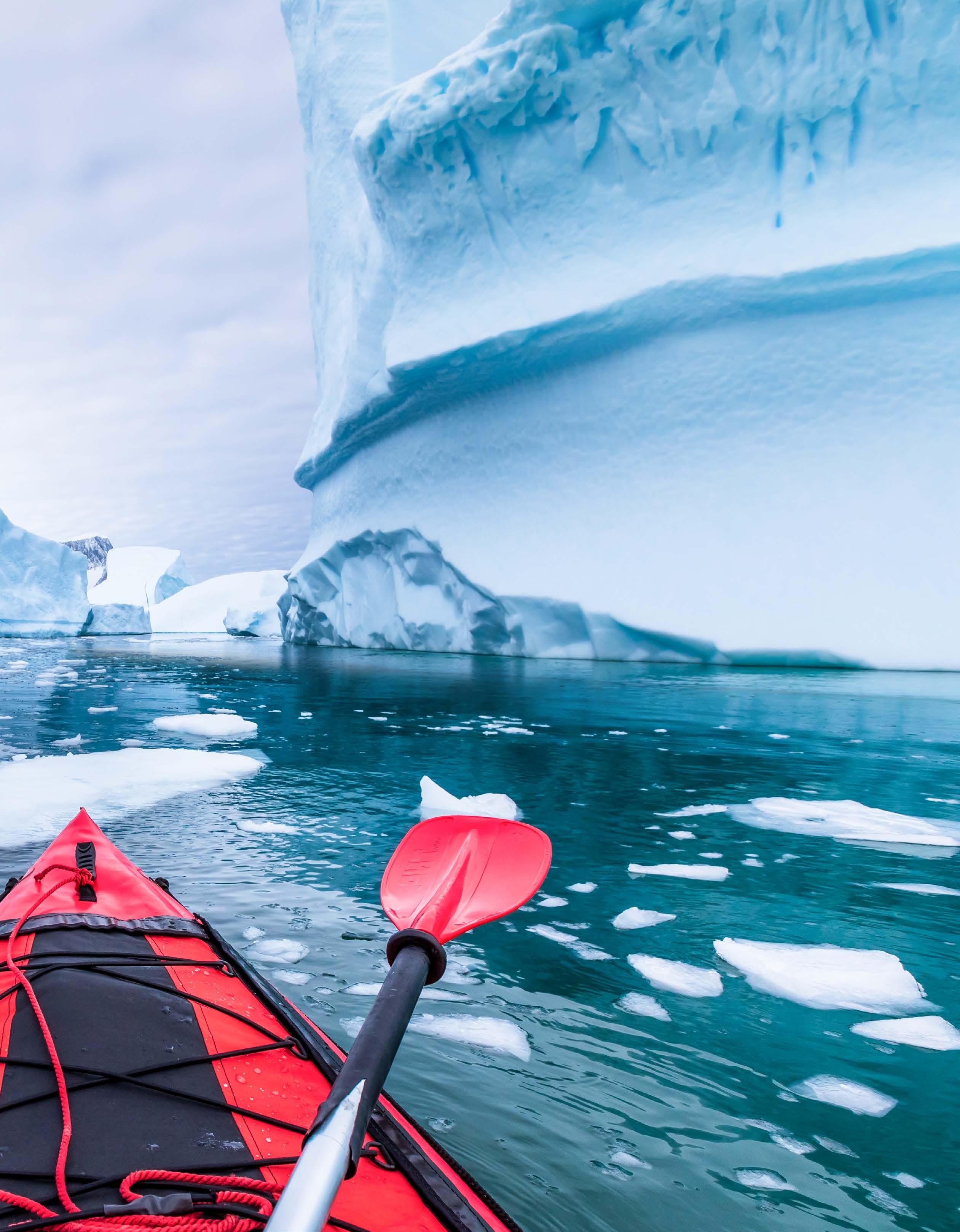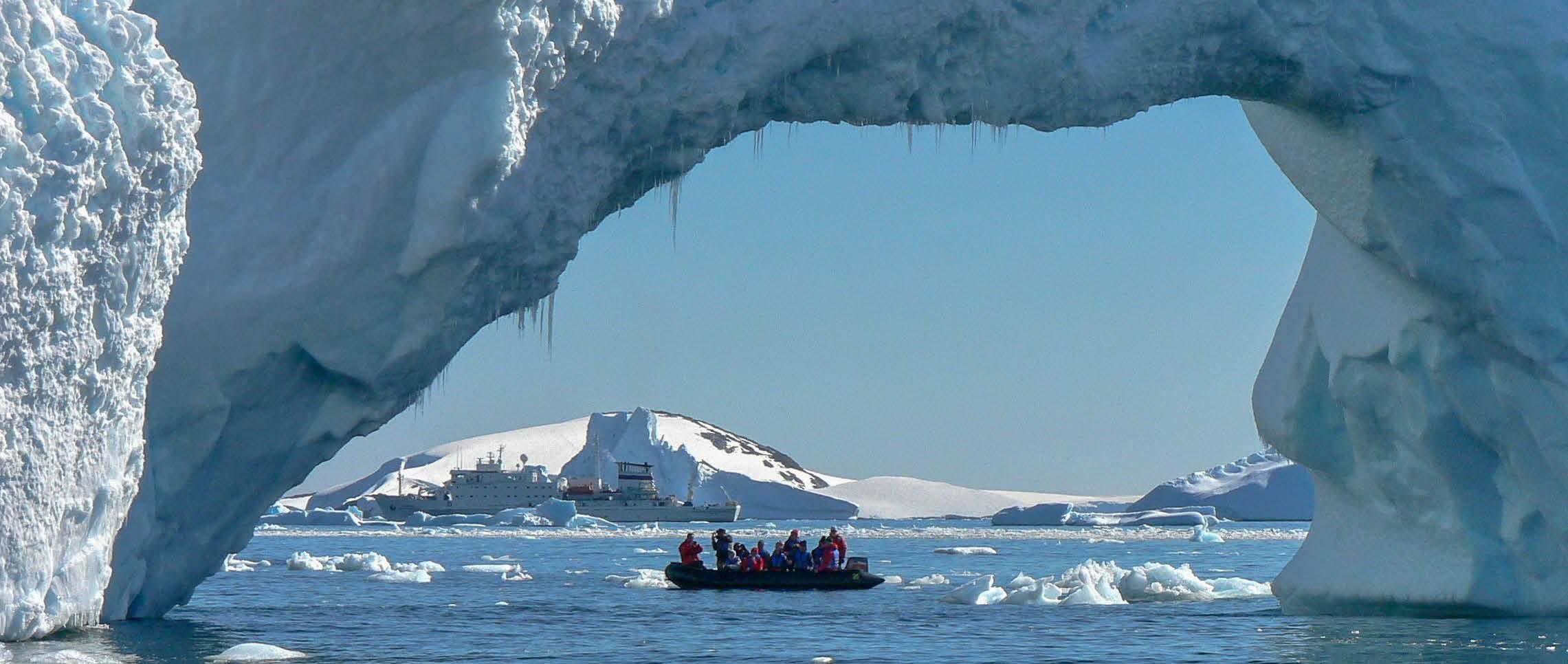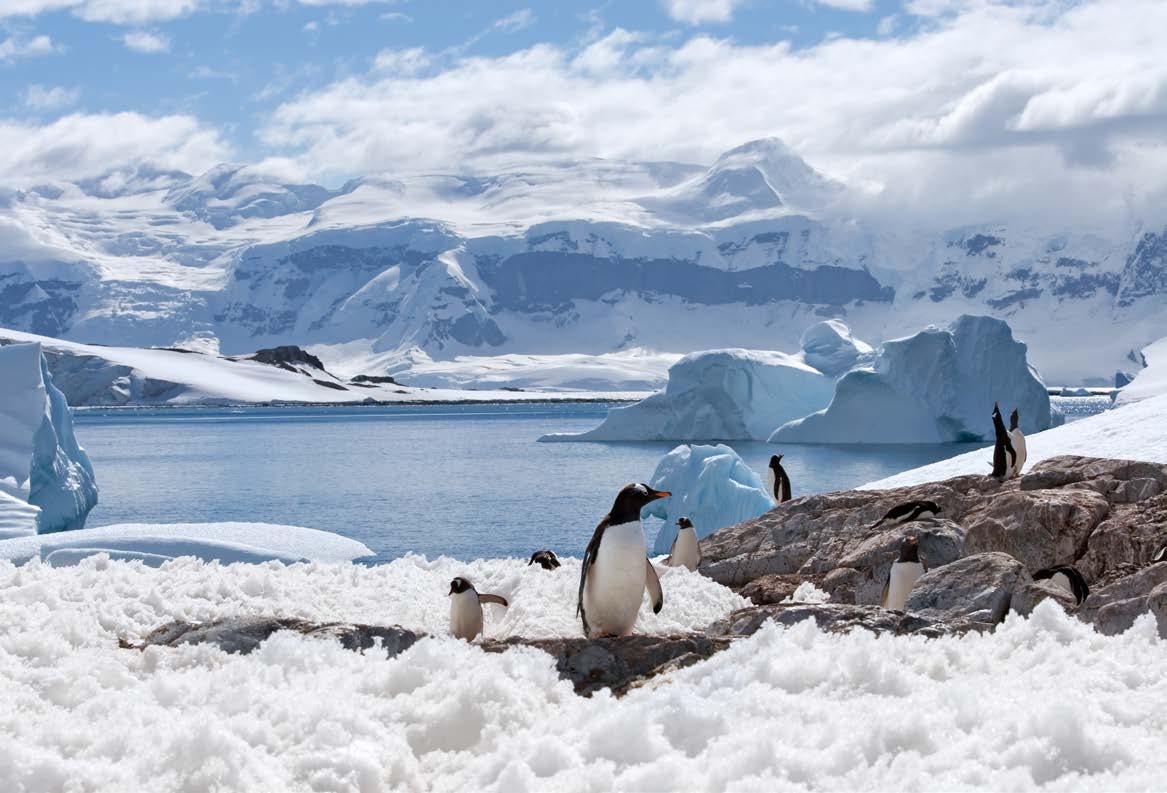
3 minute read
Antarctica Sustainable
By Kristen Pope
Travel through pristine Antarctic waters on the world’s first hybrid electric-powered cruise ship: Hurtigruten’s MS Roald Amundsen. Its sister hybrid ship, MS Fridtjof Nansen, launches in 2020.
The wind is calm in Chiriguano Bay, Antarctica, as I climb from the MS Roald Amundsen’s expedition launch into an awaiting Zodiac. We motor over to join a raft of other guests for an up-close view of maritime history. On this November day, the MS Roald Amundsen – the world’s first hybrid electric-powered cruise ship – becomes the first ship christened in Antarctica. As the flotilla maneuvers into place, flanked by Hurtigruten’s MS Midnatsol, a playful group of penguins splash nearby, leaping from the water and diving into the crystal-clear Antarctic waters.

Kayaking in Antarctica
This ship was custom-built in Norway’s Kleven shipyard and specially designed for polar waters with a PC-6 ice class. The ship’s hybrid electric-powered technology means it uses 20 percent less fuel and emits 20 percent less carbon dioxide than similarly sized cruise ships, with plenty of room to expand its battery capacity. It left Norway in July, sailing through the Northwest Passage before travelling along the western shore of the Americas and crossing the Drake Passage to Antarctica. While MS Roald Amundsen is the world’s first hybrid electric-powered cruise ship, it won’t be a solo act.

MS Roald Amundsen
The vessel’s nearly identical sister ship, the MS Fridtjof Nansen, will debut this spring. Hurtigruten is also overhauling (and renaming) three other ships which will be equipped with battery packs, expected to start sailing in 2020 and 2021. Hurtigruten CEO Daniel Skjeldam says the company is moving its fleet away from fossil fuels, switching to hybrid-electric batteries, liquefied biogas derived from fishery waste, and liquefied natural gas. “Our mission is to lead innovation in the maritime industry,” Skjeldam says. “We’ve chosen to lead by example and are going to [make] significant investments to reduce pollution from our ships with new technology.”
Additionally, the company is partnering with Brim Explorer to offer excursions in 78-foot-long, battery-powered catamarans along the Svalbard and Norwegian coasts, as well as zero-emission electric snowmobiles for Svalbard land-based expeditions. The 126-year-old Norwegian company is committed to sustainability. A decade ago, it voluntarily stopped using heavy fuel oil and, in 2018, is committed to banning single-use plastic onboard its fleet.
On MS Roald Amundsen, guests received a reusable metal water bottle to use at onboard bottle filling stations – a move that saves around 1,000 plastic bottles per day. Some crew members wear shirts made from recycled ocean plastic, and laundry and hairdryer bags are made from upcycled bed linens. The ship’s onboard science centre is another key element. Guests can become “citizen scientists” and participate in projects such as cloud observation, birding, and collecting phytoplankton samples to analyze with microscopes. Daily lectures focus on marine life, history, and sustainability.

Zodiac near a weathered iceberg
“We are about bringing this storytelling to our guests and talking to them about the challenges in our waters and how they can actually change their life where they’re living to make animals have a better way of life in the polar ice,” says Skjeldam. The expedition ship includes Antarctic landings and Zodiac cruises, as well as optional excursions like snowshoeing and kayaking. The truly adventurous can also enter a lottery for a chance to camp onshore, though this was cancelled on our sailing due to wind and ice conditions.
Between landings, enjoy luxurious spa treatments, work out in the gym or on the outdoor track, soak in an outdoor hot tub, try out the infinity pool, or sit in the sauna and marvel at the ever-changing scenery through panoramic windows. It’s always a good idea to keep an eye outside. On our expedition, people spotted 76 animal species and a mind-boggling tabular iceberg. And that’s just what Hurtigruten is aiming for: providing guests with an awe-inspiring experience, sustainably.

Penguins










